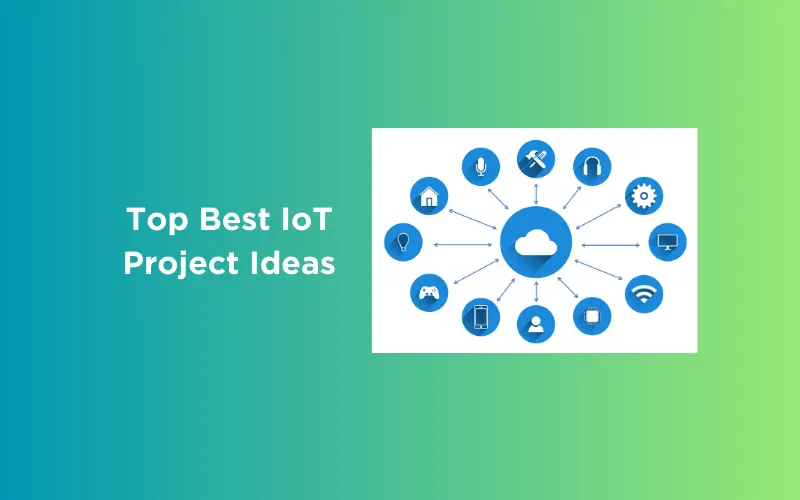
The Internet of Things, or IoT, is all about connecting everyday objects to the internet so they can collect and share data. It’s a big deal because it makes life easier and smarter, from fridges that tell you when you’re out of milk to watches that track your fitness. IoT is changing how we live, work, and play, making our world more connected and efficient.
This blog is about amazing projects you can do with IoT, which is when everyday things like lamps and fridges get smart by connecting to the internet. We’ll talk about different ideas, like making farming smarter, checking the weather in new ways, and even having a doorbell that knows when you’re there without touching it. It’s all about using this smart tech to make life easier and more fun.
Table of contents
- What Is IoT (Internet of Things)?
- Top 17 Best IoT Project Ideas
- Smart Agriculture System
- Weather Reporting System
- Home Automation System
- Face Recognition Bot
- Air Pollution Monitoring System
- Smart Gas Leakage Detector Bot
- Flood Detection System
- Forest Fire Alarm System
- Smart Parking System
- Smart Traffic Management System
- Contactless Doorbell
- Smart Waste Management System
- Health Monitoring System
- Mining Worker Safety Helmet
- Night Patrol Robot
- Smart Cradle System
- Virtual Doctor Robot
- Conclusion
- FAQs
- What are the basics needed to start an IoT project?
- How can IoT projects contribute to sustainable development?
- Are IoT projects suitable for beginners?
What Is IoT (Internet of Things)?
IoT, or the Internet of Things, refers to the network of physical objects embedded with sensors, software, and other technologies aimed at connecting and exchanging data with other devices and systems over the internet. This concept is revolutionizing various industries by enabling smart homes, efficient manufacturing, precision agriculture, and enhanced healthcare through real-time data collection, analysis, and automation, leading to increased efficiency, improved safety, and better decision-making.
Now that we know what the Internet of Things (IoT) is all about, let’s get into some amazing project ideas you can try out.
Top 17 Best IoT Project Ideas
Through IoT, devices communicate and share data, improving efficiency, convenience, and decision-making. Hands-on projects in IoT provide invaluable experience, allowing individuals to understand the complexities and potential of this technology. These projects span various fields, addressing real-world problems with innovative solutions.
1. Smart Agriculture System
The Smart Agriculture System leverages IoT technology to revolutionize traditional farming methods. By embedding sensors in the field, it collects data on soil moisture, temperature, humidity, and nutrient levels. This real-time data is analyzed to make informed decisions on irrigation, fertilization, and pest control, optimizing resource use and increasing crop yield.
IoT devices can also automate tasks such as watering and spraying, reducing manual labor and improving precision in farming practices. The system can predict agricultural outputs and help in the early detection of crop diseases, leading to more sustainable and efficient farming. Additionally, it enables remote monitoring, allowing farmers to manage their fields from anywhere, thus saving time and reducing operational costs.
By integrating with weather forecasting systems, it can also prepare farmers for adverse weather conditions, safeguarding crops and livelihoods. Overall, the Smart Agriculture System embodies the potential of IoT to transform agriculture into a more productive, sustainable, and data-driven industry.

Also Explore: Top 8 Big Data Visualization Tools That You Should Know in 2024
2. Weather Reporting System
The IoT-based Weather Reporting System transforms climate monitoring by employing a network of sensors distributed across various locations to collect detailed environmental data. These sensors measure parameters such as temperature, humidity, atmospheric pressure, and wind speed, providing real-time, hyper-local weather information.
The data collected is then processed and analyzed to generate accurate and timely weather forecasts, essential for agriculture, aviation, shipping, and outdoor event planning. This system offers significant improvements over traditional methods by providing more granular data, leading to better predictive models and more accurate weather predictions.
It can also alert communities to severe weather events like storms or heat waves, enhancing preparedness and response strategies. The integration of this system with mobile and web applications ensures that individuals and organizations can access important weather information on demand, making it an indispensable tool for planning and decision-making.

Find Out Top 8 Data Analytics Skills: A Comprehensive Guide to Thrive in the Industry
3. Home Automation System
The Home Automation System is an application of IoT, that transforms ordinary homes into smart homes. This system integrates various household devices with internet connectivity, allowing them to communicate and be managed remotely. Users can control lighting, heating, air conditioning, security cameras, and entertainment systems through a centralized platform like a smartphone app.
This not only offers unparalleled convenience but also significantly improves energy efficiency. For example, smart thermostats can learn a user’s schedule and preferences, adjusting the temperature to optimize comfort and reduce energy consumption. Smart locks enhance security by allowing remote monitoring and control of access to the home.
The system can also include smart alarms that detect and alert homeowners to potential hazards such as fires or gas leaks. With voice assistant integration, users can perform tasks hands-free, further enhancing convenience. The Home Automation System epitomizes the potential of IoT to make everyday life more comfortable, secure, and energy-efficient, while also offering a customizable and interactive living environment.

Are you ready to transform your living space into a smart home? Our Home Automation Using ESP32 course is the perfect place to start! This course offers everything you need to control and monitor your home devices with ease. Enroll now and step into the future of home automation!
Also Read: Real-World Automation Testing Applications
4. Face Recognition Bot
The Face Recognition Bot combines IoT with advanced facial recognition technology to offer enhanced security solutions. This bot can be integrated into security systems for homes, offices, and public spaces to control access based on facial recognition. Unlike traditional security systems that rely on keys or cards, the Face Recognition Bot provides a more secure and convenient solution, as faces are unique and cannot be lost or stolen.
The system captures images through cameras and uses machine learning algorithms to match them against a database of authorized individuals, allowing or denying access accordingly. It can also log entry and exit times, providing valuable data for security monitoring. This technology is particularly useful in sensitive areas where security is paramount.
Additionally, it can be used for attendance tracking in workplaces or schools, streamlining administrative processes. The Face Recognition Bot exemplifies how IoT and artificial intelligence can work together to provide innovative security solutions that are both efficient and scalable, addressing modern security challenges with sophisticated technology.

Read | Best Project Ideas for Robotic Applications – Including All 3 Levels [2024]
5. Air Pollution Monitoring System
The Air Pollution Monitoring System employs a network of IoT sensors strategically placed across urban and industrial areas to continuously monitor air quality. These sensors measure pollutants like PM2.5, PM10, nitrogen dioxide, sulfur dioxide, carbon monoxide, and ozone, providing real-time data on air pollution levels. This information is important for assessing public health risks and implementing environmental policies.
The system allows for the identification of pollution hotspots and trends, facilitating targeted actions to reduce emissions and improve air quality. It also empowers citizens by making air quality data accessible through mobile apps and websites, enabling individuals to make informed decisions about outdoor activities. Moreover, the system can trigger alerts when pollution levels exceed safe thresholds, prompting immediate action to protect public health.
Integrating with smart city platforms can also contribute to broader environmental management strategies, such as traffic regulation and industrial emissions control. The Air Pollution Monitoring System is a testament to how IoT can be harnessed to address environmental challenges, promoting sustainability and safeguarding public health.

6. Smart Gas Leakage Detector Bot
The Smart Gas Leakage Detector Bot is an innovative IoT solution designed to enhance safety in domestic and industrial settings by detecting and alerting about gas leaks. Equipped with sensors capable of identifying various gases like natural gas, propane, and carbon monoxide, this bot promptly notifies users via smartphones or central monitoring systems when gas concentrations exceed safe levels.
This early detection is important in preventing potential hazards, including explosions and health risks from gas inhalation. The system can also automatically trigger ventilation systems or shut off gas supply lines to mitigate risks. Its application in homes, commercial kitchens, and industrial plants ensures a safer environment by providing real-time monitoring and swift response capabilities.
The detector bot’s ability to integrate with other smart home or industrial systems enhances overall safety protocols, making it an important component of modern safety management strategies. The Smart Gas Leakage Detector Bot illustrates the potential of IoT to enhance safety measures, offering peace of mind and protecting assets and lives.

Also Explore: 4 Best Programming Languages For Robotics You Should Learn
7. Flood Detection System
The Flood Detection System is a proactive IoT solution designed to mitigate the risks associated with flooding. By deploying sensors along rivers, coastlines, and flood-prone areas, this system monitors water levels in real time. When levels rise to potentially dangerous thresholds, the system sends immediate alerts to relevant authorities and local communities, enabling early evacuation and preparation measures.
This advanced warning is important for minimizing the impact of floods, allowing for the safeguarding of lives and property. The system can also be integrated with existing weather forecasting and emergency response systems to enhance overall disaster preparedness. Additionally, the collected data can be used for long-term flood management strategies and infrastructure planning, helping to reduce future flood risks.
The Flood Detection System exemplifies how IoT can play an important role in disaster risk reduction, providing critical information that can save lives and reduce economic losses.

8. Forest Fire Alarm System
The Forest Fire Alarm System uses IoT technology to provide an early warning mechanism for forest fires, which are a major environmental disaster. By utilizing a network of sensors placed throughout forested areas, this system can detect the early signs of a fire, such as smoke or a rapid increase in temperature. Upon detection, it sends real-time alerts to forest management authorities and emergency services, enabling a swift response to contain the fire before it spreads extensively.
This system is important for the preservation of ecosystems and the protection of wildlife. It also significantly reduces the economic and environmental costs associated with large-scale forest fires. By incorporating satellite data and predictive analytics, the system can also help in identifying potential fire hotspots, further enhancing preventive measures.
The Forest Fire Alarm System is a prime example of how IoT can be utilized for environmental protection, demonstrating the potential of technology to mitigate the impacts of natural disasters.

Find Out 6 Best AI Tools for Coding
9. Smart Parking System
The Smart Parking System employs IoT technology to address the challenge of finding parking spaces in crowded urban areas. It utilizes sensors or cameras installed in parking lots to monitor the availability of spaces in real time. This information is then relayed to a central system and can be accessed by drivers through a mobile app or digital signage, guiding them directly to available spots and significantly reducing the time and frustration associated with parking in busy areas.
Furthermore, the system can optimize parking space usage, support dynamic pricing models based on demand, and provide valuable data analytics for urban planning. Integrating with city traffic systems can also contribute to reducing congestion and pollution, making urban environments more livable. The Smart Parking System exemplifies how IoT can enhance urban infrastructure, offering a more efficient, user-friendly, and sustainable approach to city parking.

10. Smart Traffic Management System
The Smart Traffic Management System uses IoT to optimize traffic flow and enhance road safety. It integrates sensors, cameras, and smart traffic lights across road networks to monitor traffic conditions in real-time. By analyzing this data, the system can dynamically adjust traffic light timings to reduce congestion, prioritize emergency vehicles, and improve pedestrian safety.
This adaptive approach to traffic control not only reduces travel time but also lowers vehicle emissions, contributing to environmental sustainability. Additionally, the system can provide drivers with real-time traffic updates and route recommendations, further easing congestion. In the event of accidents or unusual traffic patterns, it can quickly alert relevant authorities, facilitating a faster response.
The Smart Traffic Management System represents a significant advancement in urban mobility, showcasing how IoT can create smarter, safer, and more efficient cities.

Also Read: Best 15 Product-based Companies for IoT Solutions Architects in India
11. Contactless Doorbell
The Contactless Doorbell is an innovative application of IoT technology, designed to minimize physical contact and promote hygiene in the post-pandemic world. It uses motion sensors or proximity sensors to detect a person’s presence at the door, eliminating the need to physically press a button. This system can notify occupants through smartphones, smart speakers, or traditional chimes, ensuring convenience without compromising safety.
It’s particularly useful in public buildings, medical facilities, and residences, offering a sanitary way to announce visitors. The doorbell can also integrate with smart home systems for additional functionalities, such as activating cameras for security or enabling remote communication with visitors. The Contactless Doorbell is a testament to how IoT can adapt to changing health and safety requirements, providing simple yet effective solutions for everyday challenges.

12. Smart Waste Management System
The Smart Waste Management System utilizes IoT to streamline the collection and processing of waste. It involves equipping waste bins and containers with sensors that monitor fill levels, and when a bin reaches its capacity, the system automatically alerts waste management services for collection. This ensures that bins are emptied just in time, avoiding overflow and reducing odor and litter in public areas.
The system can also optimize collection routes and schedules based on real-time data, improving operational efficiency and reducing fuel consumption. By analyzing waste patterns, it can further contribute to recycling efforts and sustainability initiatives. The Smart Waste Management System exemplifies how IoT can enhance urban services, making waste management more efficient, environmentally friendly, and responsive to community needs.

Also Explore: AI vs ML vs Data Science: What Should You Learn In 2024?
13. Health Monitoring System
The Health Monitoring System is a sophisticated application of IoT technology designed to enhance personal health management. It involves the use of wearable devices and sensors that continuously gather health-related data such as heart rate, blood pressure, body temperature, and activity levels. This data is then transmitted to a centralized platform where it can be analyzed to provide insights into the user’s health status, detect anomalies, and even predict potential health issues before they become serious.
Users can access their health metrics in real-time through mobile apps, enabling them to make informed decisions about their lifestyle and seek medical advice when necessary. For healthcare providers, this system offers a tool for remote patient monitoring, improving the efficiency of care and allowing for timely interventions. The Health Monitoring System is a testament to how IoT can revolutionize personal healthcare, promoting preventive medicine and personalized health management.

14. Mining Worker Safety Helmet
The Mining Worker Safety Helmet is an IoT-enabled safety device designed to protect individuals working in hazardous mining environments. It is equipped with environmental sensors that monitor air quality, detecting harmful gases and oxygen levels, as well as sensors to measure ambient temperature and humidity. Additionally, it can include features like a headlamp, a communication system, and GPS for location tracking.
In case of dangerous conditions, the helmet can alert the wearer and surface control centers, facilitating immediate action to ensure worker safety. The helmet’s data collection capabilities also allow for the analysis of environmental conditions over time, contributing to improved safety protocols and preventive measures. This innovative use of IoT technology in the Mining Worker Safety Helmet underscores the potential of smart devices to enhance occupational safety in high-risk industries.

Also Know About RPA Developer: 2 Classy Roles & Responsibilities Explained
15. Night Patrol Robot
The Night Patrol Robot is an advanced security solution powered by IoT and AI technologies. Designed for nighttime surveillance, this autonomous robot is equipped with cameras, motion sensors, and night vision capabilities to detect and record any unusual activities or intruders within its patrol area. It can navigate pre-determined routes autonomously or be remotely controlled, and it uses machine learning algorithms to distinguish between normal and suspicious behaviors.
In case of an incident, it can immediately alert security personnel and provide real-time video footage, enabling a swift response. The Night Patrol Robot is ideal for monitoring large areas such as warehouses, industrial complexes, and parking lots, offering a cost-effective and efficient alternative to human patrols. This project highlights the integration of IoT with robotics and AI, showcasing a futuristic approach to security and surveillance.

16. Smart Cradle System
The Smart Cradle System is an IoT-based innovation designed to enhance infant care by automating the rocking motion of a cradle and monitoring the baby’s environment for optimal comfort and safety. Equipped with sensors, the system can detect when a baby is crying and automatically initiate a gentle rocking motion to soothe the infant.
It can also monitor room temperature, humidity, and sound levels, adjusting settings to maintain a comfortable and safe sleeping environment. The system allows parents to control and monitor the cradle remotely via a smartphone app, providing peace of mind and convenience.
Additionally, it can play lullabies or white noise to help the baby sleep. The Smart Cradle System exemplifies how IoT can be applied to childcare, offering innovative solutions to improve the well-being of infants and assist new parents.

17. Virtual Doctor Robot
The Virtual Doctor Robot is an IoT-enabled telehealth solution designed to facilitate remote medical consultations. Combining robotics, video conferencing, and health monitoring technologies, this robot acts as an intermediary between patients and healthcare professionals.
Patients can interact with the robot to relay their symptoms, and the robot can perform basic diagnostic procedures, such as measuring temperature or blood pressure, using integrated medical sensors. The data collected is then shared with healthcare providers in real time, allowing for informed medical advice and diagnosis without the need for the patient to leave their home.
This system is particularly beneficial in remote or underserved areas where access to medical care is limited. The Virtual Doctor Robot demonstrates the potential of IoT and robotics in transforming healthcare delivery, making it more accessible and efficient.

Also Read: 7 Real-World Cloud Computing Engineering Applications
These IoT project ideas not only solve practical problems but also inspire innovation and creativity in technology development. They offer a glimpse into the vast potential of IoT across different sectors, driving advancements that could shape the future.
Conclusion
Exploring IoT project ideas is a great way to learn and innovate in the tech world. These projects show how IoT can solve real problems and make life better in many areas. We encourage you to try creating your own IoT projects, and see how you can contribute to this exciting field!
Explore More: 7 Benefits of AI-Powered Learning Environments
FAQs
Starting an IoT project requires a basic understanding of electronics, programming, and knowledge of how different sensors and actuators work. Familiarity with IoT platforms and connectivity options like Wi-Fi or Bluetooth is also essential.
IoT projects can significantly contribute to sustainability by optimizing resource use, reducing waste, and enhancing energy efficiency. Projects like smart agriculture and air pollution monitoring systems can help in conserving the environment.
Yes, there are many beginner-friendly IoT projects, such as simple home automation systems or weather reporting systems, that provide a great introduction to the world of IoT without requiring advanced technical skills.

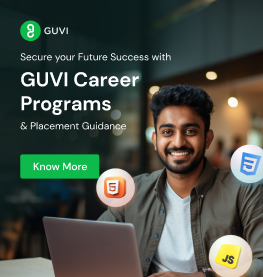





















![Project-Based Learning: Smart Ideas and Important Tips To Implement It [2025] 21 Feature Image - Project-Based Learning](https://www.guvi.in/blog/wp-content/uploads/2024/05/feature_image.webp)
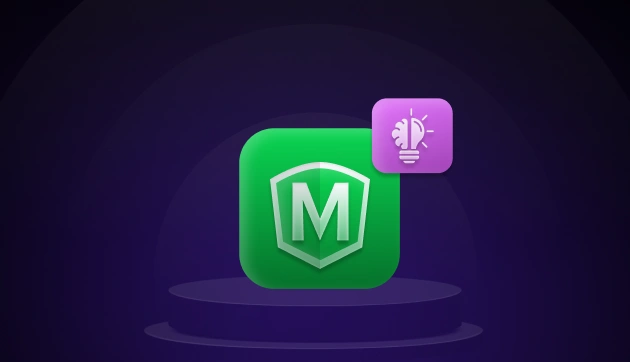
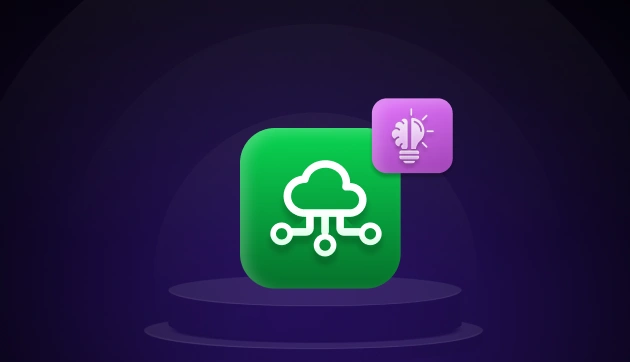
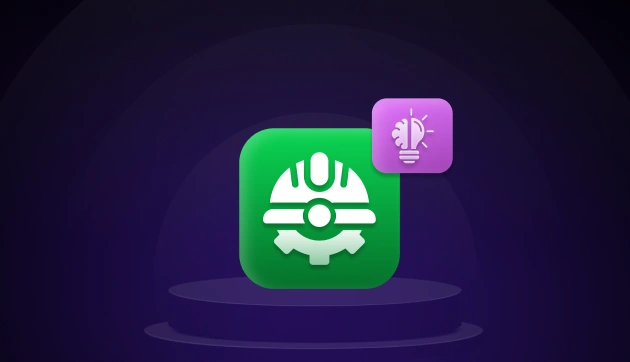


![Top 10 Coding Project Ideas for Beginners [2025] 23 coding project](https://www.guvi.in/blog/wp-content/uploads/2024/05/feature_image-.webp)

Did you enjoy this article?